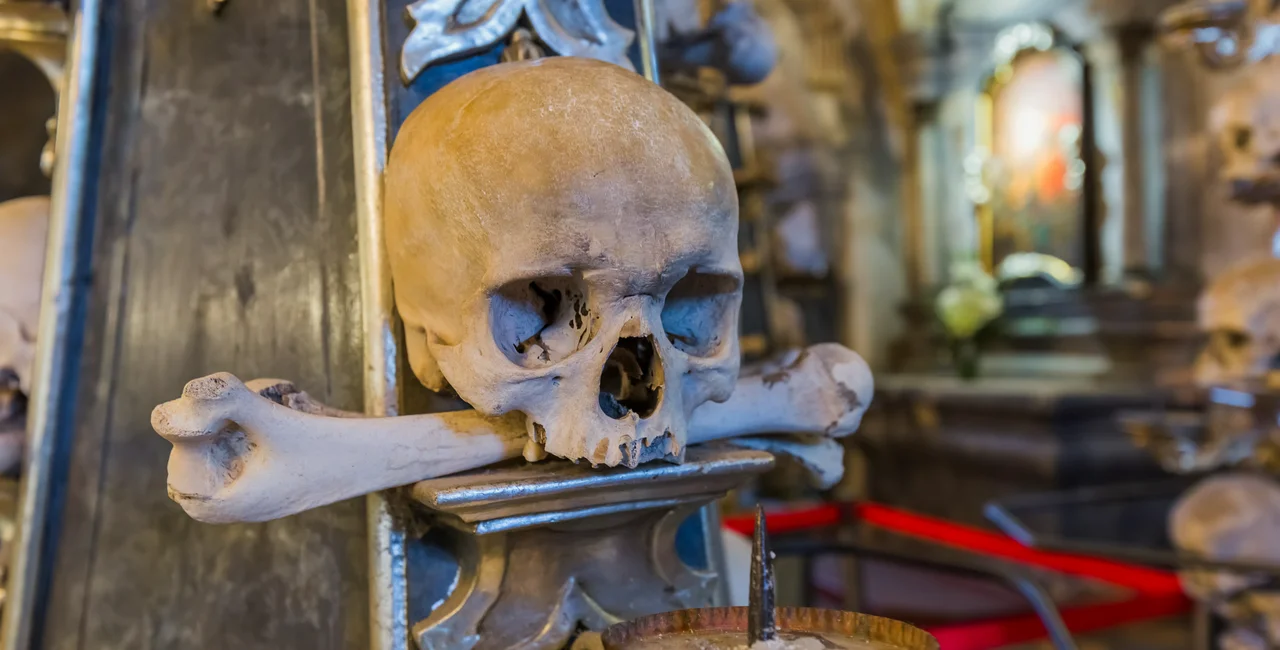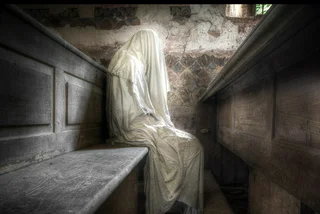It's a bit ironic that a pandemic is behind delays to the renovation of a church adorned with bones from 14th-century victims of the Black Death. Covid-era tourism losses have slowed down the restoration of the famous Bone Church near Kutná Hora, or the Church of All Saints, as it's officially called.
The work, which began in 2014, was scheduled for completion in 2027 but will now stretch out to 2030. Repairs are funded from ticket sales, which have been hard hit by the sharp downturn in tourism.
The ossuary normally ranks in the top 20 tourist attractions in the Czech Republic. According to figures from Czech Tourism, visits were down 74 percent in 2020, reaching only 123,800, compared to 2019 when there were almost half a million. Figures for 2021 have not been released yet.
The Roman Catholic parish of Kutná Hora-Sedlec so far has invested about CZK 80 million in the restoration works, but in 2021 the investment was less than CZK 6 million.
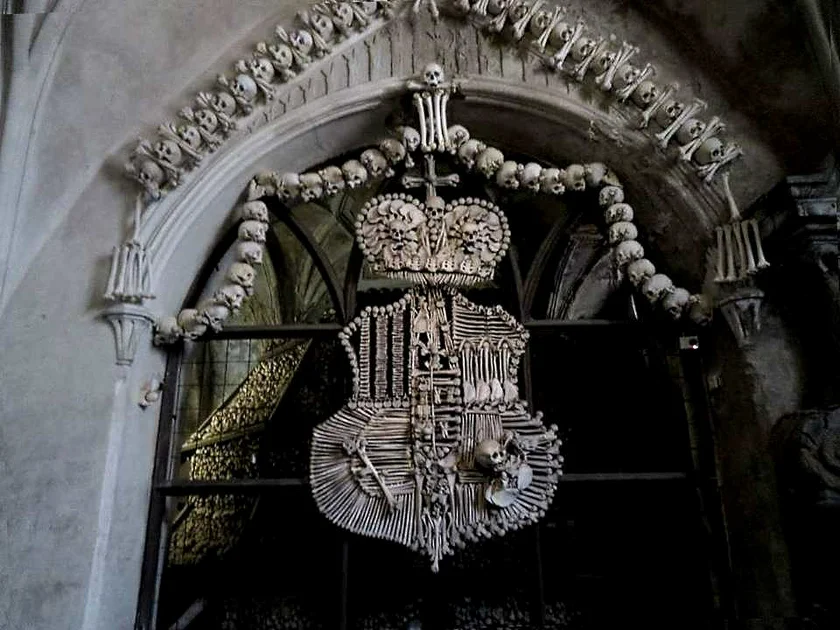
The iconic church remains open during the renovation, with some displays from the ossuary in the basement chapel being removed one at a time. Structural work is also taking place on the church itself and the surrounding cemetery is also being restored, and an underground gallery is being added.
This year will see a bone pyramid painstakingly put back into place. One of the four pyramids was dismantled in 2019 so the damaged plaster with Baroque stucco decorations could be restored.
The repair process to the pyramid involved brushing, drying, and treating the bones with lime. Glass will be put in place so visitors can see the pyramid being rebuilt. Fragments that could not be salvaged will be buried though no substitute bones or plaster casts will be used as filler.
A wooden framework will be added for stability, so in the end, the pyramid will look slightly bigger than it did in 2019. The pyramids were much larger originally but have shrunk as some of the bones disintegrated and turned to dust over the centuries. Many were lost due to a lack of maintenance during the communist era. The cost of renovating each pyramid is about CZK 20 million.
Damage to displays in the chapel was also incurred by selfie-seekers either carelessly backing into bones or posing with them. Photography without prior approval was banned as of 2020, as were large guided tours.
Without intervention to the church’s structure, it could fall within 10 years, spokesperson Radka Krejčí recently told news server Aktualne.cz.
"Pieces of plaster were falling off, the bone decoration was suffering. Our altars were falling apart, some were even covered with moss," Krejčí said.
The church above the ossuary has been affected by both humidity and unstable subsoil. It is currently tilted 80 centimeters from the vertical axis, Krejčí said, adding that the angle is only slightly better than that of the Leaning Tower of Pisa.
A new underground tunnel that will house historical exhibits devoted to the church and archaeological finds could open in 2027. It is currently being excavated, and stone walls for displays are being installed.
Archaeological excavations of the cemetery in 2019 turned up 34 previously unknown mass graves containing the bones of approximately 1,300 people who died in a famine in 1318 and a plague in 1348.
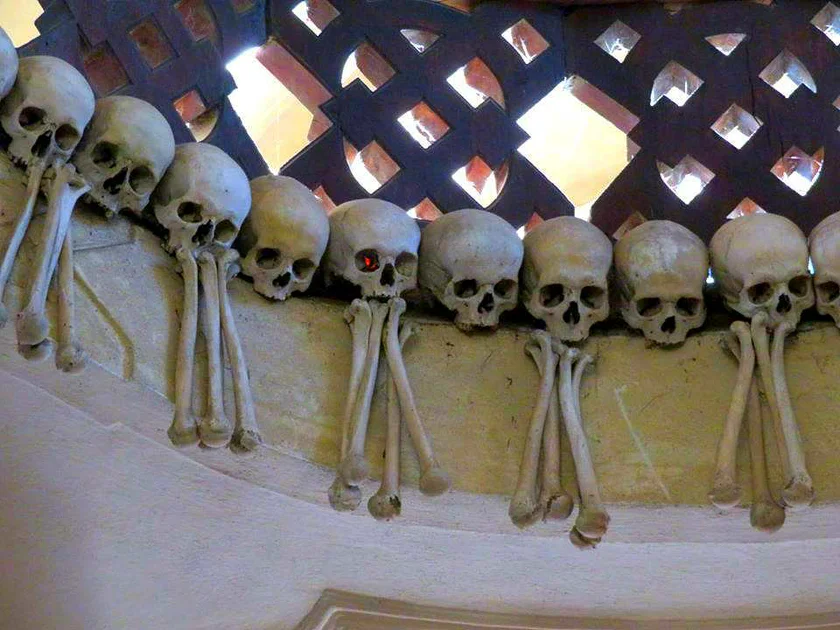
The repair work will include ventilation ducts that are not visible to tourists. These will help to remove the excess moisture.
The chapel dates to the 14th century, though the cemetery is older. It has long been considered a sacred burial place among believers for containing a handful of soil brought back from the Crusades.
The soil is said to be from Calvary hill where, according to Christian tradition, Jesus Christ was crucified. It was spread through the cemetery by a Cistercian abbot tasked with traveling to Jerusalem in 1278 at the behest of Bohemian King Otakar II.
The Church of All Saints was built in the middle of the cemetery around the year 1400. The lower level chapel was designed as a place to hold excess bones from mass burials or from graves that were no longer maintained. In addition to the Black Death, many of the bones from the ossuary come from the Hussite Wars of the early 1400s.
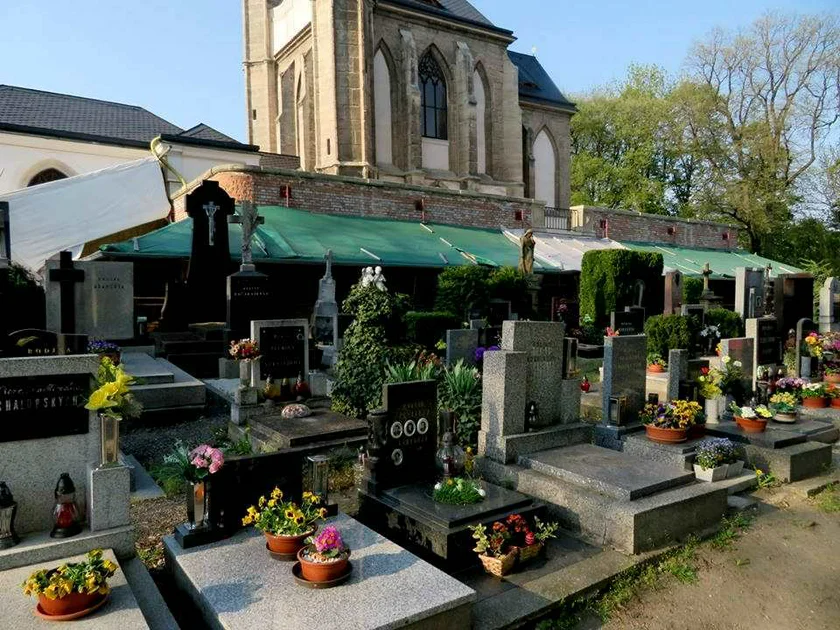
The upper part of the church was renovated in the Baroque style between 1703 and 1710, based on a plan by Jan Blažej Santini Aichel.
In 1870 the noble Schwarzenberg family hired woodcarver František Rint to organize the bones. He arranged them into designs including chandeliers and a coat of arms and built the bone pyramids. The bones of an estimated 40,000 people rest in the chapel.
With the renovation, the church hopes to restore the space's reverential character and dignity. "People come here for some bizarre museum or garden of horrors, but no one realizes that it is a mass tomb and a functioning church,” Krejčí said.
“This has always been a place of pilgrimage. People have come for calm down and to humbly consider their lives and finiteness,” she added.
The ossuary, Church of all Saints, and the nearby Cathedral of the Assumption of Our Lady and Saint John the Baptist are open to the public, and tickets can be bought online or at the information center at Zámecká 279.
The sites are closed on Mondays from November to February but open daily from March to October. They are also closed on Dec. 25, Good Friday, and White Saturday. The ossuary, which is actively seeking support for its extensive renovations on Czech fundraising platform Darujeme.cz, has also added night tours and other "experiences" to attract visitors. More information is on the venue website.












 Reading time: 4 minutes
Reading time: 4 minutes 